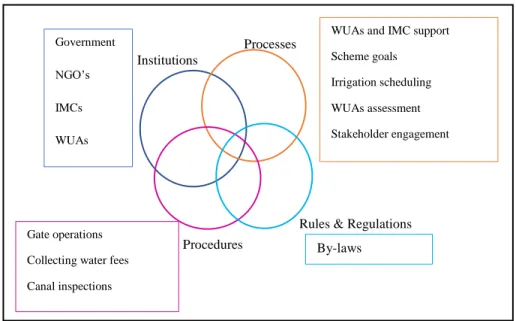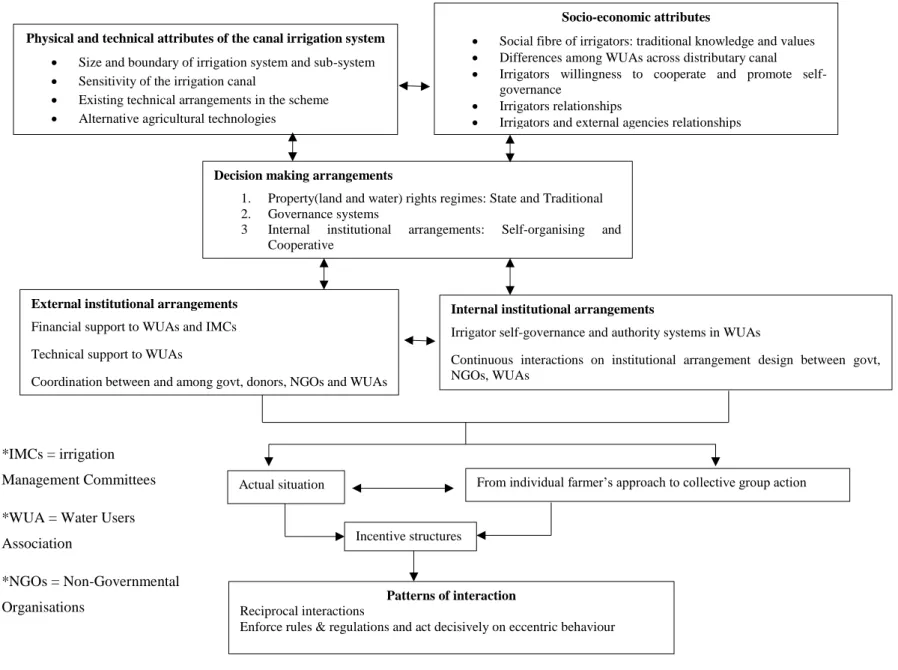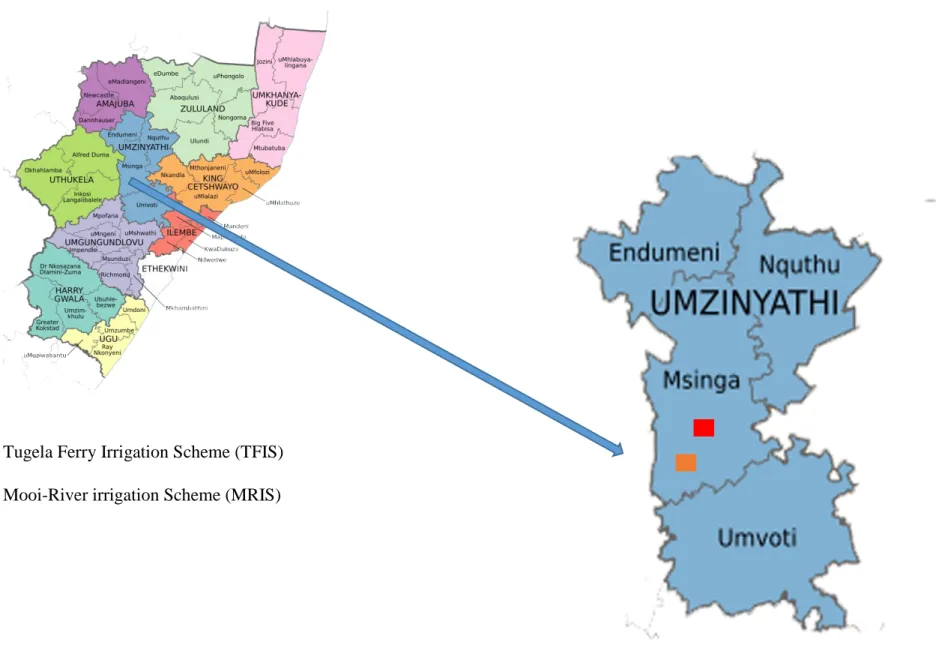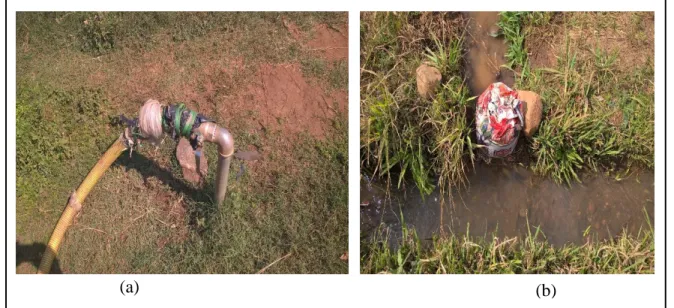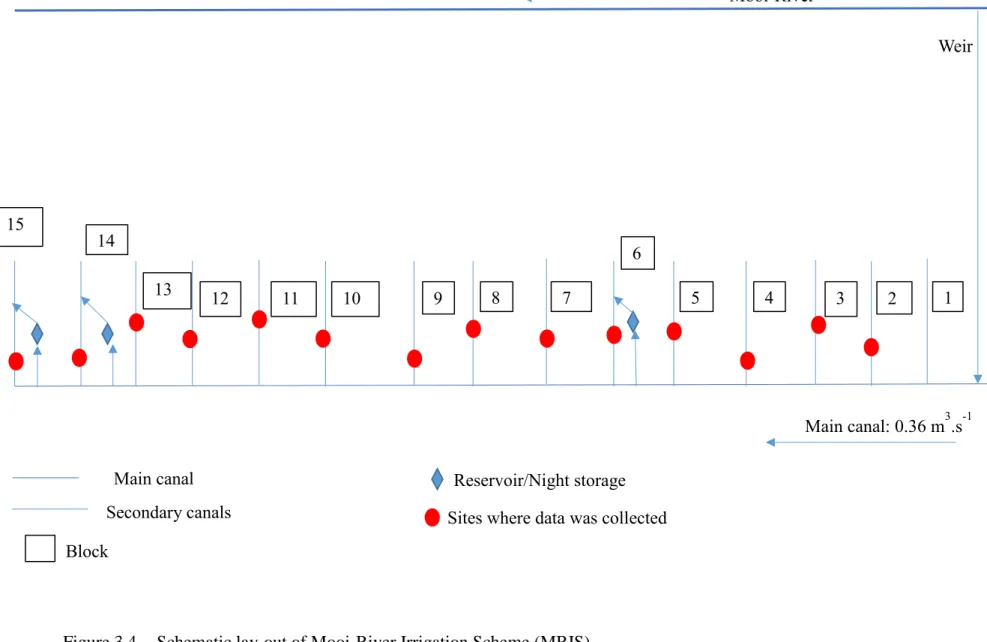The study assumed that the existing current water management infrastructure is indeed related to the water management frameworks in the selected study locations. Overall, the study proved the hypothesis that water management infrastructure is not related to the water management framework.
Typical SISs Infrastructure
Assess the functional and operational relationships between the water control infrastructure and water management in the study irrigation schemes. Evaluate the impact of water management on the adequacy of water for crop production in selected SISs in KwaZulu-Natal.
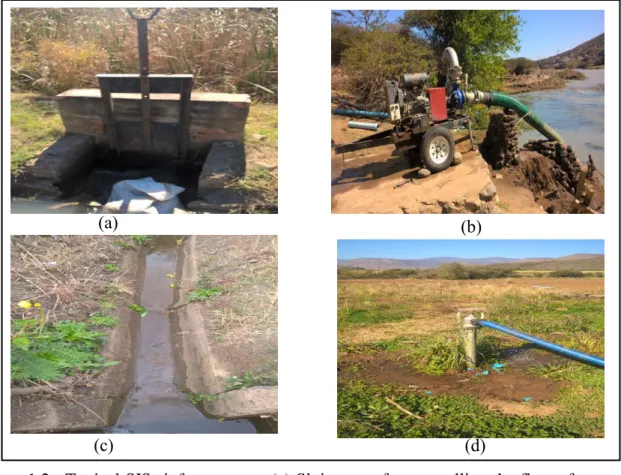
Outline of Dissertation Structure
Performance assessment of small water infrastructure (SWI) for multi-purpose use on the Nebo Plateau, Sekhukhune District, South Africa. Smallholder irrigation schemes in South Africa: a review of knowledge gained by the Water Research Commission.
LITERATURE REVIEW
Background
Smallholder Agriculture: A Historical Perspective
African Smallholder Irrigation Schemes and Irrigation Management Transfer
Centralized management caused a high level of dependence on external management among small farmers (Van Averbeke et al., 1998). The Water Care Program was the vehicle for RESIS and aimed at revitalizing identified smallholder irrigation schemes.
Smallholder Irrigation Schemes Performance in South Africa
However, the dominant features seem to be, on the one hand, the discrepancy between the outdated institutional framework and the emerging new demands in irrigation management, and the general incompetence of most formally established institutions in the face of strong socially developed institutions. the other (Abemethy, 1993). Bandaragoda & Firdousi (1992) further argue that changes in irrigation regulations and organizational structures have not been matched to rapid developments in other facets of irrigation in the form of resources and technology, and in social demand.
Governments Intervention and Action Plans in Smallholder Irrigation Schemes
- Emerging policy issues and strategy formulation
- Institutional arrangements
Nevertheless, low agricultural yields from smallholder irrigation schemes reduce the efforts made to achieve stability through improved physical infrastructure and technological inputs, all in a bid to improve performance, so yields are an important indicator of the performance of revitalized schemes (Bandaragoda & Firdousi, 1992). This five-year plan sets targets parallel to the New Growth Path (NGP) to eradicate poverty and achieve food security in rural areas by building and revitalizing existing irrigation systems.
Water Access and Water Security
The hierarchical arrangement ensures that the supervisory authority in the main channel adheres to the rules and regulations according to the water budget prescribed by the Department of Water and Sanitation (DWAS). The paradigm shift in irrigation management has been largely influenced by IMT and Participatory Irrigation Management (PIM) approaches within the water sector (Perret & Geyser, 2007; Gomo et al., 2014).
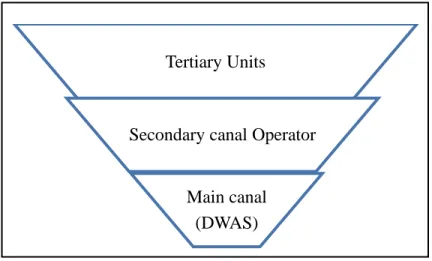
Farmer Participation: Development of Water User Associations (WUAs)
Although water resource management is established to promote harmony between water users and the improved technology, there are often always conflicts and misallocations. The operational reality and the design assumption tend to be in parallel and the management staff at the different levels of the system "inherit" systems with hydraulic defects incompatible with the staff's capabilities and hardly understood by farmers (Horst , 1998).
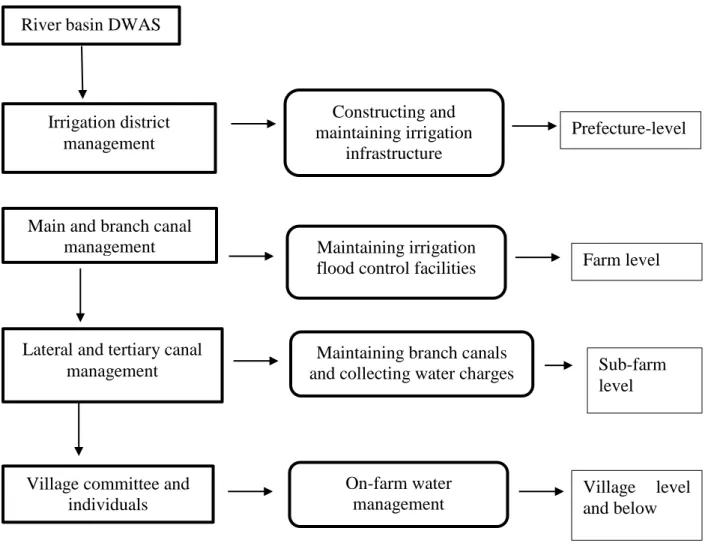
Policies Hindering the Performance from a Technical Perspective
- Hydraulic water delivery performance in irrigation schemes
- Canal operation
- Choice of technology
Internal indicators facilitate a comprehensive understanding of the processes that affect the water delivery service and overall performance of a system (Facon et al., 2008). Poor infrastructure maintenance results in poor performance in terms of water supply through leakage.
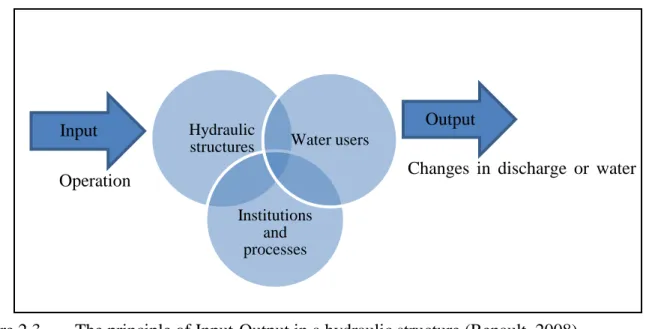
Discussion and Conclusions
However, such efforts have been in vain as the operational requirements of water management infrastructure clash with indigenous socio-technical knowledge (Richards, 1985). Establishing a synergy between governance and water control infrastructure is essential as it can minimize water conflicts and promote effective water use within irrigation systems.
Farmers' satisfaction with the performance of the Mooi River Irrigation Scheme, KwaZulu-Natal, South Africa. The economics of smallholder irrigation water management: institutions, water use values and farmer participation in KwaZulu-Natal, South Africa.
Introduction
Low-income countries are prone to water shortages because water supply infrastructure is poorly designed and managed (Carter et al., 1999). Sinyolo et al. 2014) cited insufficient institutional support as the cause of infrastructure deterioration in the Tugela Ferry Irrigation Scheme (TFIS).
Materials and Methods
- Study site
- Infrastructure condition assessment (ICA)
- Data collection and analysis
- Hydraulic components of the Mooi-River irrigation scheme
The paper investigated and evaluated the state of the water control infrastructure in TFIS and MRIS. Supply through the irrigated lands consists of the main canal with short sections of pipes where the canal is impractical.
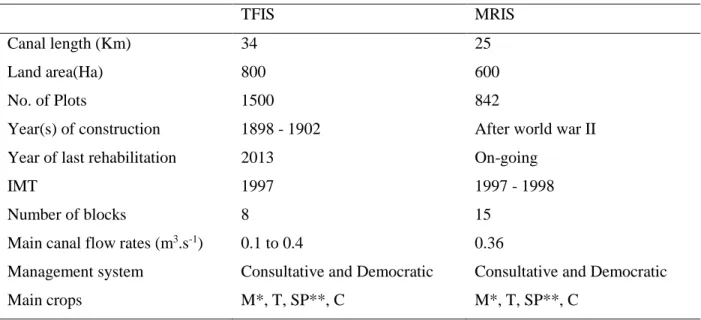
Sampling Procedure
Root Cause Analysis (RCA): Fishbone “Ishikawa” Diagram
Determining the Relative Causal Index (RCI)
The RCI has values from 0 to 1, and the higher the RCI, the more likely the factor was to cause infrastructure deterioration (Kometa et al., 1994).
Results and Discussion
- Visual assessment and hydraulic infrastructure survey: Mooi River and
- Infrastructure condition assessment (ICA)
- Root cause analysis: fishbone “ishikawa” diagram
Based on this literature, six sub-factors were identified: unaccountability, unfair electoral process, non-existence of WGVs and IMCs, unsustainable stakeholder intervention, ineffective implementation of the constitution and disharmony between WGVs and traditional councils (Figure 3.15). From this category, three sub-factors were identified and they were: ineffective water management laws, ineffective irrigation policies and poor rule enforcement (Figure 3.15).
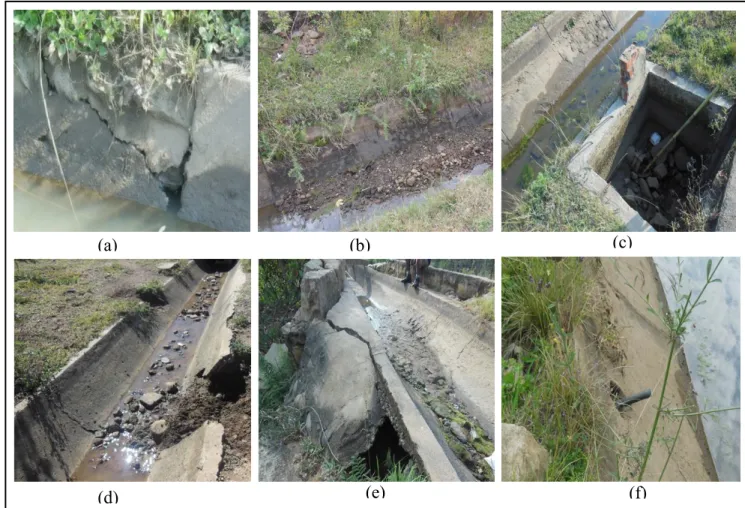
Further Discussion on Root Cause Analysis and Relative Causal Index
- Diverging points
Technical experts appreciated the causal factor by mentioning that the installation of scheme managers is not based on merit. According to technical experts, ineffective irrigation policies and water laws both had 𝑅𝐶𝐼𝑡𝑒= 0.7 and 𝑅𝐶𝐼𝑡𝑒 = 0.3 respectively.
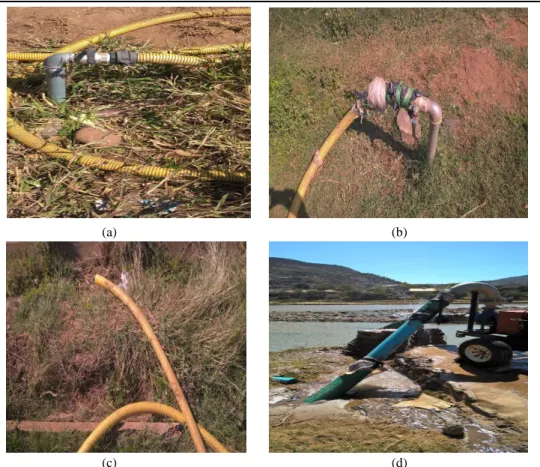
Conclusion
Recommendations
The conditions of collective action for the management of local goods: the case of irrigation in the Philippines. Assessing the relationship between water control infrastructure and water management: the case of the Tugela Ferry and Mooi-River irrigation schemes.
Introduction
The FAHP techniques were used to determine the fuzzy weight of the water management infrastructure aspects and the FTOPSIS was used to rank the water management aspects, i.e. institutions, processes, procedures, rules and regulations, in relation to the infrastructure weights. The aim of the study was to assess the functional and operational relationship between water control infrastructure and the water management systems in selected SISs. The next section defines the tools used for data analysis.
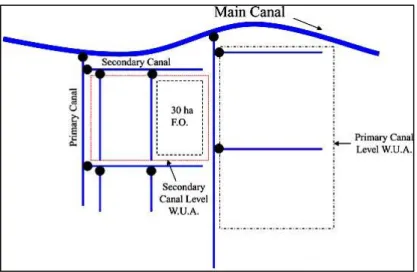
Water Governance
To achieve optimal performance levels in the scheme, the technology and the water management framework must interact. Unsustainable management in SISs stems from the disconnect between the physical and technical characteristics of the irrigation scheme, socio-economic characteristics of the irrigators, local knowledge of the irrigators and irrigation control structures (Marothia, 2002).
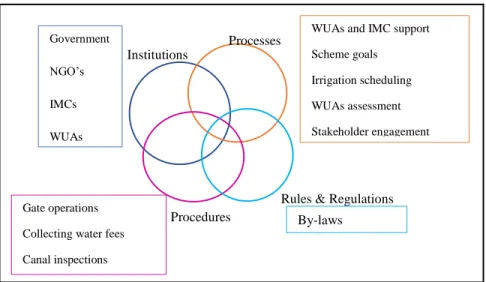
Basic concepts of fuzzy theory and their link to water governance
In this study, fuzzy numbers are a transformation of linguistic variables used by experts to assign fuzzy weights to aspects of water control infrastructure. In addition, fuzzy numbers are also used to define linguistic variables that are used to evaluate aspects of water management against

Study Area and Methodology
- Study area
- Multi-criteria decision making
- Data collection for FAHP and FTOPSIS
- Expert selection
- The Adopted Infrastructure-Governance Conceptual Model
- Fuzzy analytical hierarchy process
The study applied a multi-criteria decision-making model (MCDM) based on fuzzy theory (Zadeh, 1996) to establish a functional and operational relationship between water control infrastructure and water governance. It then asked experts to rate the performance of each aspect of infrastructure in relation to aspects of water governance.
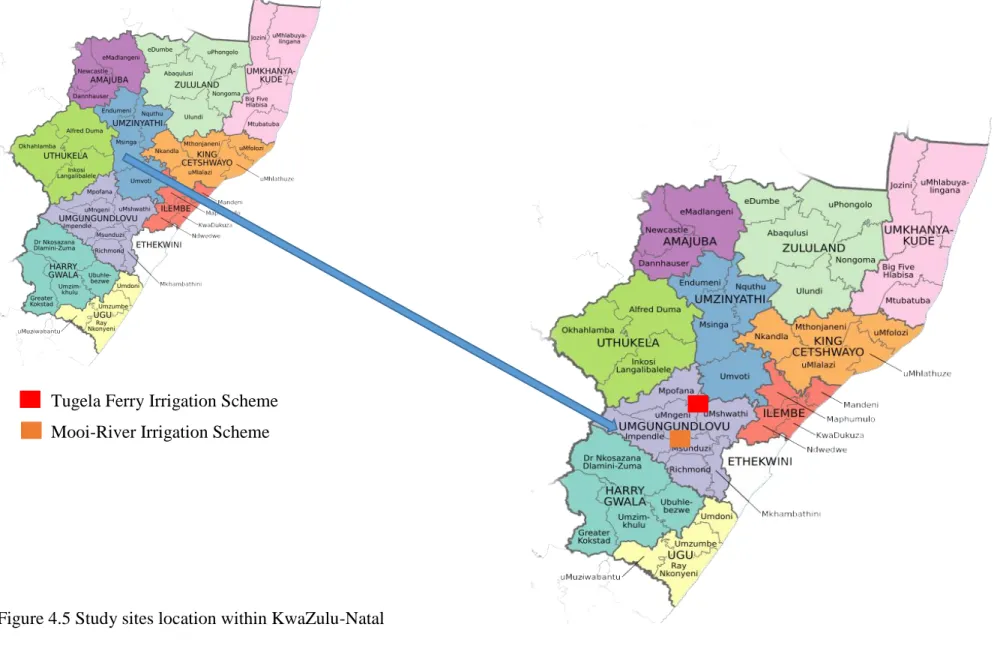
Applying the FAHP for weight determination
According to Erensal et al. 2006), triangular fuzzy numbers are used to represent common sense linguistic statements, which are the key premise of pairwise comparison. Pedrycz (1983) used a logarithmic regression model to calculate the fuzzy weight estimates, and this model allowed for multiple estimates that addressed the problems of missing data.
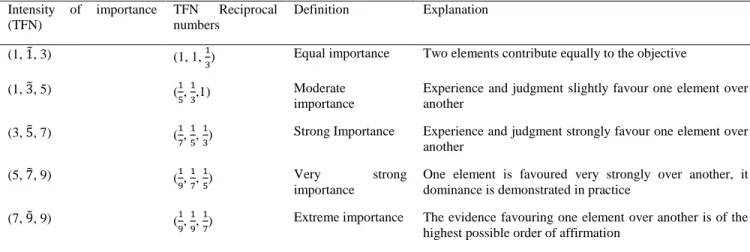
Fuzzy technique for order preference by similarity to ideal solution
The elements 𝑣𝑖𝑗 are normalized positive fuzzy numbers and their range belongs to the closed interval [0, 1]. The higher 𝐶𝐶𝑖 the better the aspect's performance with respect to infrastructure characteristics and requirements.
Results and Discussion
- Euclidean distances
- Managerial implications
The finding is consistent with Shahrokhnia et al. 2009) who argued that poor water equity is attributed to inaccurate and deficient understanding of the water control infrastructure. The findings in this study resonate with Renault (2000a) who argued that the lack of procedural systems that monitor irrigation scheme status for improved infrastructure operations and maintenance contributes to poor understanding of the water control infrastructure.

Conclusion
Recommendations
Mudhara; Water management impacts on water adequacy in smallholder irrigation schemes in KwaZulu-Natal Province, South Africa. This research aimed to investigate the impact that water management had on the adequacy of water in irrigation schemes and it was based on the hypothesis that management had no effect on water adequacy.
Introduction
Water adequacy involves the delivery of the required amount of water at the right time and is a function of the state of the hydraulic infrastructure and the management structures in place (Figure 5.1). The aim of the study was to determine the influence of water management on the adequacy of water for crop production.
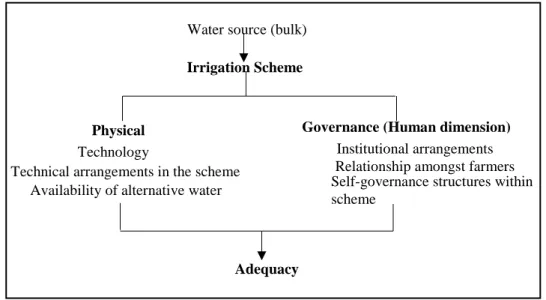
Model Specification
Materials and Methods
- Study site
Water is diverted from a dam constructed across the Mooi River into a parabolic channel that runs 20.8 km from the diversion point to the end of the scheme (DAEA, 2001). The end user uses a diesel pump to pump water from the Mooi River into the canal.
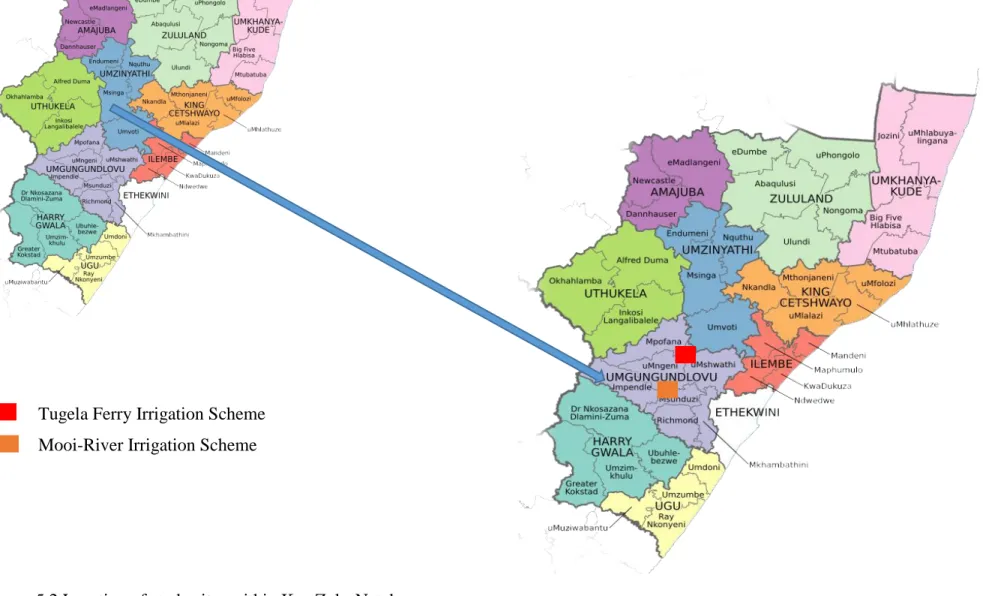
Data collection
- Variable selection
Water Management Training (WAMTR), Irrigation Training (IRRTR) and Agriculture Training (AGRTR) were also identified as likely factors affecting water sufficiency in irrigation schemes. Fair electoral process (FAIRELECTPRCSS), participation in water-related training and irrigation meetings (ATTWTRLDTRA and ATTIRRMTNGS), water conflicts between blocks and farmers (WATCONFLBLK and WACONFLFRM) were identified as factors related to water management that could affected water sufficiency.
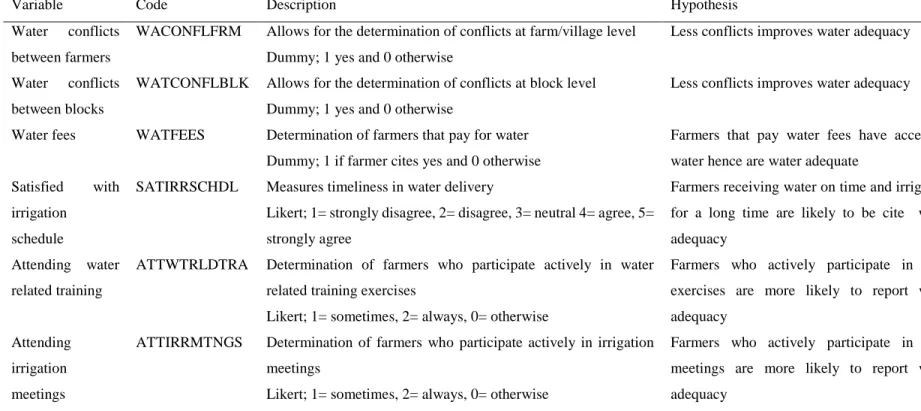
Data analysis
AVWALIC) and water fees (WATFEES) were also identified as water management-related factors that may have influenced water sufficiency. The variable available water rights (AVWATRGHT) was considered as a potentially water adequacy influencing control factor.
Results and Discussions
- Descriptive statistics for MRIS and TFIS
- Binary logit analysis
Farmers' participation in irrigation and water management training increased the chances of experiencing water sufficiency. 58% of farmers who agreed with the fair election process under the scheme cited water sufficiency, while 54% of farmers who have sufficient water neither agreed nor disagreed.
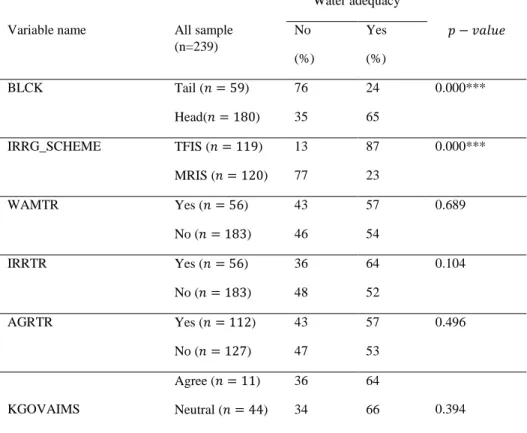
Regression Model Diagnostics
Training in water management is associated with a 16% increase in the probability of an indication of water adequacy. The positive influence of having a water permit increased the probability of citing water adequacy by 59%.
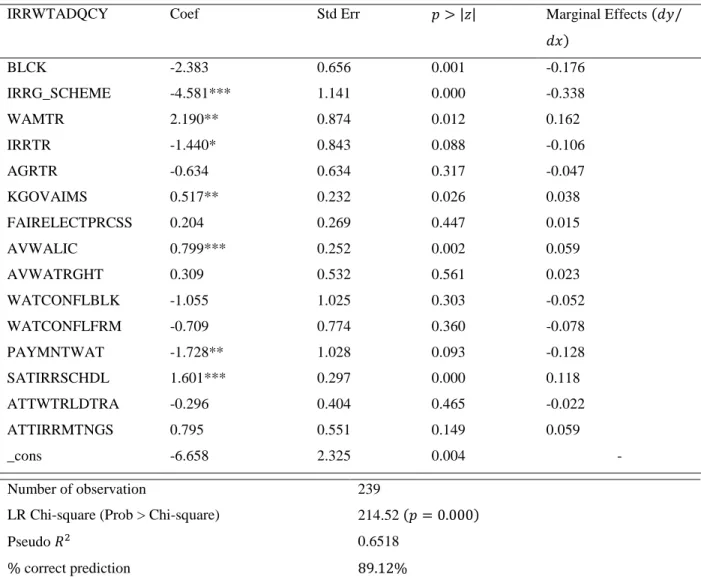
Conclusion
A flexible irrigation schedule facilitates agronomic planning and decision making. 1989) cite a flexible irrigation schedule that promotes satisfaction among irrigators, giving them more freedom in economic and agronomic decision making.
Recommendations
Revitalizing Smallholder Irrigation Schemes for Poverty Alleviation and Household Food Security in South Africa: A Review. Assessing smallholder irrigation performance in South Africa and opportunities for deriving best management practices.
Background
Findings and Conclusions
- Infrastructure condition
- Functional and operational relationships between water control
- Governance impacts on water adequacy
The investigative study concluded that various components of infrastructure in both irrigation schemes (MRIS and TFIS) were in poor condition. The study concluded that farmers at the top were always adequately watered and this created an "artificial".
Recommendations
Collective action and participation in irrigation water management: A case study of Mooirivier irrigation scheme in KwaZulu-Natal Province, South Africa. A measure of water use efficiency and its determinants, a case study of small-scale irrigation schemes in North West Province, South Africa.
